Due to power consumption and cost issues, the industry predicts that by 2020, less than 10% of the 50 billion wireless nodes of the Internet of Things (IOT) will use GSM technology. Although telecom operators have the most prominent advantages in building and managing such a large-scale network, they need a long-distance, large-capacity system to consolidate in the battery-powered wireless terminal market segment-wireless sensor networks, smart cities , Smart grid, smart home, security equipment and industrial control. For the Internet of Things, only by using a wide range of technologies can the number of battery-powered wireless nodes reach the expected scale.

LoRa, as a long-distance communication technology of low-power wide area network (LPWAN), has received more and more attention in recent years.
LoRa technology
LoRa is a kind of LPWAN communication technology, it is a kind of ultra long-distance wireless transmission scheme based on spread spectrum technology adopted and promoted by American Semtech company.
It is the physical layer or wireless modulation used to establish long-distance communication links. Many traditional wireless systems use frequency shift keying (FSK) modulation as the physical layer because it is a very effective modulation for low power consumption.
LoRa is based on chirp spread spectrum modulation, which maintains the same low power consumption characteristics as FSK modulation, but significantly increases the communication distance.
LoRa technology itself has super high receiving sensitivity (RSSI) and super signal-to-noise ratio (SNR). In addition, frequency hopping technology is used to perform frequency shift keying through a pseudo-random code sequence to make the carrier frequency continuously hop and spread the spectrum to prevent fixed-frequency interference.
At present, LoRa mainly operates in free frequency bands around the world, including 433, 868, and 915 MHz.
The biggest feature of LoRa is:
Long transmission distance
Low power consumption
Many network nodes
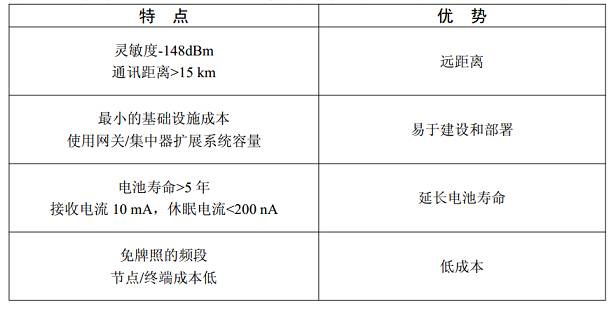
LoRa network architecture
In a mesh network, individual terminal nodes forward the information of other nodes to increase the communication distance of the network and the size of the network area. Although this increases the range, it also increases complexity, reduces network capacity, and reduces battery life, as nodes accept and forward information from other nodes that may not be relevant to it. When realizing long-distance connections, the long-distance star architecture is most meaningful to protect battery life.
If the gateway is installed in the position of the existing mobile communication base station, the transmission power is 20dBm, (100mW), then it can cover about 2 kilometers in the densely built urban environment, and the coverage area can reach 10 kilometers in the suburbs with lower density. The gateway/concentrator also contains the MAC layer protocol, which is transparent to the higher layers.
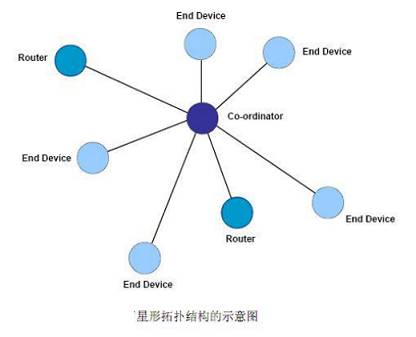
The LoRa network is mainly composed of terminals (with built-in LoRa modules), gateways (or base stations), network servers and application servers. Application data can be transmitted in both directions.
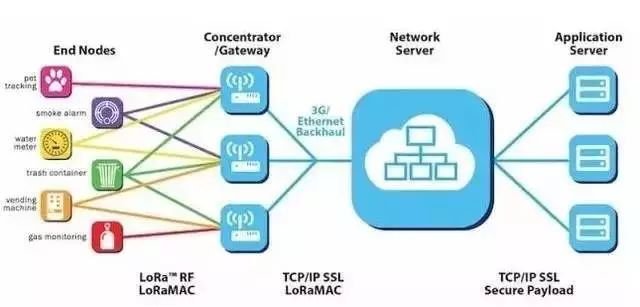
The LoRaWAN network architecture is a typical star topology. In this network architecture, the LoRa gateway is a transparent transmission relay that connects the terminal equipment and the back-end central server. The terminal device uses a single hop to communicate with one or more gateways. All nodes communicate with the gateway in both directions.
LoRa terminal equipment
The terminal nodes of LoRa may be various devices, such as water and gas meters, smoke alarms, pet trackers, etc. These nodes are first connected to the LoRa gateway through LoRa wireless communication, and then connected to the network server through the 3G network or the Ethernet network. The gateway and network server communicate through TCP/IP protocol.
The LoRa network divides terminal equipment into three categories: A/B/C:
Class A: Two-way communication terminal equipment. This type of terminal equipment allows two-way communication, and each terminal equipment uplink transmission will be accompanied by two downlink reception windows. The transmission time slot of the terminal equipment is based on its own communication requirements, and its fine-tuning is based on the ALOHA protocol.

Class A equipment has the lowest power consumption, and the downlink communication of the base station can only be after the terminal uplink communication
Class B: Two-way communication terminal equipment with preset receiving time slot. This type of terminal equipment will open redundant receiving windows at a preset time. To achieve this goal, the terminal equipment will receive a Beacon from the gateway synchronously, and synchronize the time of the base station and the module through the Beacon.

Class B terminal can let the base station know that the terminal is receiving data
Class C: Two-way communication terminal equipment with the largest receiving window. This type of terminal device continues to open the receiving window and only closes during transmission.

Class C devices have the longest receiving window and consume the most power
LoRa Alliance
The LoRa Alliance is an open, non-profit organization led by Semtech in March 2015. Its sponsoring members include French Actility, Chinese AUGTEK and Royal Dutch Telecom kpn. In less than a year, the alliance has developed more than 150 member companies, including heavyweight manufacturers such as IBM, Cisco, and French Orange.
There are a large number of companies in each link of the industry chain (terminal hardware manufacturers, chip manufacturers, module gateway manufacturers, software manufacturers, system integrators, network operators). The openness of this technology, competition and cooperation Adequacy has promoted the rapid development and ecological prosperity of LoRa.
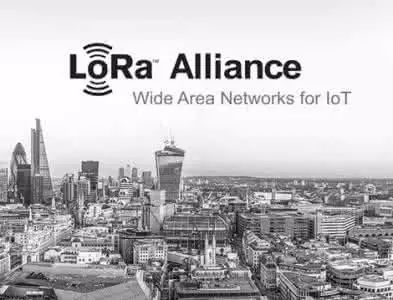
LoRaWAN protocol
LoRaWAN is a Low Power Wide Area Network (LPWAN) standard based on the open source MAC layer protocol launched by the LoRa Alliance. This technology can provide local, national or global networks for battery-powered wireless devices. LoRaWAN aims at some of the core requirements in the Internet of Things, such as secure two-way communication, mobile communication, and static location identification services. This technology does not require local complex configuration, and enables seamless docking and interoperability between smart devices, giving users, developers, and enterprises in the Internet of Things field free operation permissions.
LoRa vs. NB-IoT
We have introduced NB-IoT in the previous article. At the same time, as a wireless communication technology for the Internet of Things, the two technologies of NB-IoT and LoRa have different technical and commercial characteristics, so there will be different application scenarios.
At present, from the perspective of industry development, a complete industry chain consisting of seven links: chips, modules, terminals, communication equipment, platforms, operators, and applications has been formed. Compare NB-IoT and LoRa:

Frequency band, service quality and cost
LoRa works in unlicensed frequency bands below 1GHz, so no additional payment is required for application. NB-IoT and cellular communications use licensed frequency bands below 1GHz. The frequency band between 500MHz and 1GHz is the best choice for long-distance communication, because the actual size and efficiency of the antenna have considerable advantages.
LoRaWAN uses free unlicensed frequency bands and is an asynchronous communication protocol, which is the best choice for battery power and low cost. LoRa and LoRaWAN protocols have unique characteristics in dealing with interference, network overlap, scalability, etc., but they cannot provide the same quality of service (QoS) as the cellular protocol.
It is reported that the bid for the authorized Sub-GHz frequency band exceeds 500 million US dollars per MHz. Cellular networks and NB-IoT cannot provide the same battery life as LoRa due to quality of service (QoS) considerations. Due to QoS and high frequency band usage fees, cellular networks and NB-IoT are recommended for application scenarios that need to ensure QoS. LoRa is a good choice if low cost and a large number of connections are the preferred option, as shown in the figure below.

Battery life and downlink delay
The concept of cellular network design is to optimize the frequency band utilization rate, which in turn sacrifices node cost and battery life. On the contrary, LoRaWAN nodes are born for low cost and long battery life, and have certain deficiencies in frequency band utilization.
Regarding battery life, there are two important factors to consider, the node's current consumption (peak current and average current) and the protocol content. LoRaWAN is an asynchronous ALOHA-based protocol, which means that nodes can sleep long or short according to the needs of specific application scenarios, while nodes of synchronous protocols such as cellular must be regularly connected to the Internet.
For example, mobile phones currently on the market must synchronize with the network every 1.5s when working. In NB-IoT, this synchronization is reduced but still performed regularly, which consumes additional battery power.
Modulation in cellular networks is an effective means to make full use of frequency bands, but it is not effective from the point of view of nodes. Cellular modulation (OFDM or FDMA) requires a linear transmitter to generate a modulated signal, and a linear transmitter requires several orders of magnitude more peak current than non-linear modulation. The higher the peak current, the more battery power will be consumed. .
However, the synchronous communication protocol has advantages in shorter downlink delay, and NB-IoT can provide fast data transmission rates for applications that require a large amount of data throughput. And LoRaWAN's Class B shortens the delay of downlink communication by waking up the terminal periodically (implemented by programming) to receive downlink messages.
Therefore, NB-IoT may be a better choice for applications that require frequent communication, shorter delays, or larger data volumes. For scenarios that require lower costs, higher battery life, and infrequent communications Said LoRa is better.
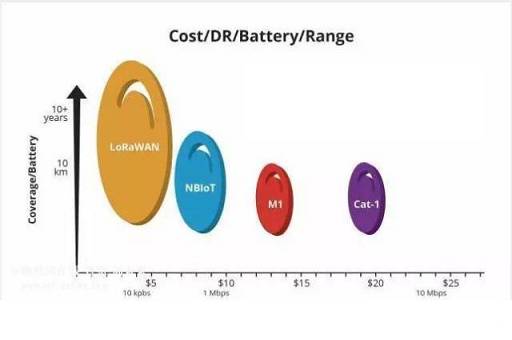
Equipment cost, network cost and hybrid model
For terminal nodes, the LoRaWAN protocol is simpler than NB-IoT, easier to develop, and has better applicability and compatibility for microprocessors. The modulation mechanism and protocol of NB-IoT are more complicated, which requires more complicated circuits and more cost. At the same time, NB-IoT is taxed like 3GPP.
At this stage, the tax for a mobile phone is about $5, but this is too expensive for IoT devices, and if the tax is rashly reduced, it will cause price confusion in the mobile communication market such as mobile phones. Therefore, how the 3GPP organization weighs the taxes and fees of IoT and mobile communications is also a big problem.
Low-cost, relatively mature LoRa modules are already available on the market, and upgraded versions will follow. The LoRa Alliance does not have too many restrictions on copyrights and taxes, making it very impressive for modules under the LoRa industry chain to be less than $4. Currently, the price of LoRa modules on the market is generally US$7-10, but as the technology matures, US$4-5 is not a big problem. But now the price of an LTE module is difficult to be less than 20 dollars.
Compared with the traditional network that only relies on the "Tower" network, deployment of IoT and LPWAN requires different models to reduce expenditure and operating costs. LoRaWAN deployment costs less, because it can use traditional signal towers, industrial base stations and even portable home gateways.
At this stage, the price of a tower base station is about US$1,000, and the price of an industrial base station is less than US$500, while a home-style gateway only costs about US$100. But for NB-IoT, the price of upgrading existing 4G LTE base stations is conservatively estimated to be no less than US$15,000 each.
Application scenarios of LoRa and NB-IoT
No single technology can meet all the requirements of IoT applications at the same time. The following will analyze the suitable application scenarios of NB-IoT and LoRa through several specific application examples.
A: Smart meter
Companies and departments in the field of smart meters require high-speed data transmission, frequent communications, and low latency. Since the electric meter is powered by a power source, there is no need for ultra-low power consumption and long battery life. In addition, real-time monitoring of the wire network is also required to deal with hidden dangers in time.
LoRaWAN's ClassC can achieve low latency, but NB-IoT is a more suitable choice for smart meters, which requires high transmission rates and frequent communications. And electricity meters are generally installed in fixed locations in densely populated areas, so it is easier for operators to network.
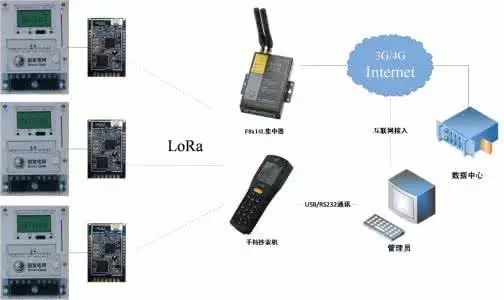
B: Smart Agriculture
For agriculture, low-power and low-cost sensors are urgently needed. The application of sensors such as temperature, humidity, carbon dioxide, and salinity is of great significance for agriculture to increase output and reduce water consumption. These sensors need to upload data regularly.
LoRa is very suitable for such scenarios. Moreover, many remote farms or arable land are not covered by cellular networks, let alone 4G/LTE, so NB-IoT is not as suitable for smart agriculture as LoRa.

C: automated manufacturing
The operation of factory machinery requires real-time monitoring, which can not only ensure production efficiency but also improve manual efficiency through remote monitoring. In the automated manufacturing and production of factories, there are many different types of sensors and equipment.
Some scenarios require frequent communication and ensure good quality of service (QoS). At this time, NB-IoT is a more suitable choice. And some scenarios require low-cost sensors with low-power and long-life batteries to track the device and monitor the status, then LoRa is a reasonable choice. So for the diversity of automated manufacturing, NB-IoT and LoRa are both useful.

D: Intelligent building
For the renovation of the building, sensors such as temperature and humidity, safety, harmful gas, and water flow monitoring are added, and the monitored information is uploaded regularly, which facilitates the supervision of managers and makes users more convenient.
Generally speaking, the communication of these sensors does not need to be particularly frequent or to ensure a particularly good quality of service, and a portable home gateway can meet the needs. So LoRa in this scene is a more appropriate choice.
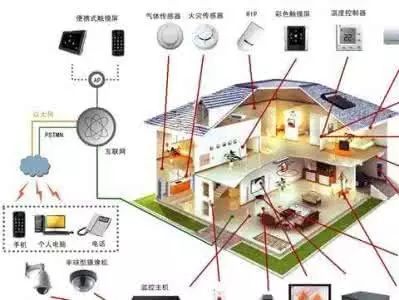
E: Retail Terminal (POS)
Point-of-sale (POS) systems often require more frequent and high-quality communications, and these devices usually have dedicated power supply equipment, so there is no requirement for a long battery life. At the same time, there are higher requirements for the timeliness and low latency of communication. Therefore, NB-IoT is more suitable for this application based on the above considerations.
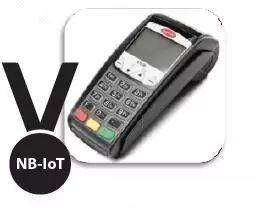
F: Logistics tracking
An important requirement for tracking or locating the market is the battery life of the terminal. Logistics tracking can be used as a practical case of hybrid deployment. According to the needs of positioning, the logistics enterprise can deploy the network at the required location, which can be a warehouse or a transportation vehicle. At this time, the portable base station comes in handy.
LoRa can provide such a deployment solution, but for NB-IoT, the laying of base stations with excessive tracking range is a big problem. At the same time, LoRa has a feature that communication is more stable than NB-IoT when moving at high speed. For the above considerations, LoRa is more suitable for logistics tracking.
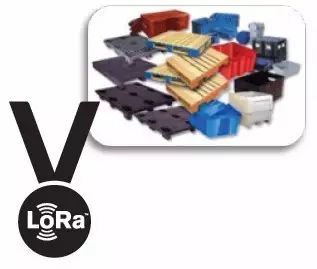
A technology from paper to commercial is inseparable from the support of a strong ecosystem. For a long time, the Internet of Things connection technology has been fighting each other, and the specifications adopted by all parties from the chip to the system are different, causing a bottleneck for large-scale deployment.
Today, the successive deployments of operators such as China Telecom, China Mobile, China Unicom, Huawei and Qualcomm have gradually built an ecosystem that supports the NB-IOT technology industry, and mainstream operators in various countries such as Orange, SoftBank, Senet and Comcast have adopted them. The ecology of the LoRa technology industry has also taken shape.
Both technologies are continuing to expand, and the conditions for them to embrace the Internet of Everything are slowly beginning to mature. A large number of suppliers and operators are also constantly launching trials. It is believed that the complementary development of NB-IoT and LoRa in the future will greatly promote the innovation and progress of IoT technology.
Diamond turning and diamond boring
Both diamond turning and diamond boring are performed with polycrystalline diamond tools.
honing
Honing is to use the oil stone (also called honing bar) inlaid on the honing head to finish the hole.
grinding
Grinding is the use of coated or pressed abrasive particles embedded in the grinding tool, through the grinding tool and workpiece in a certain pressure of the relative movement of the surface for finishing processing.
superfinishing
Ultra-finishing is the finishing of the finished surface by using fine-grained whetstone mounted on the vibrating head.
Abrasive belt grinding
Belt grinding is the grinding of workpiece surface with high-speed annular belt.
Mirror grinding
Mirror surface grinding is a grinding method to achieve the optimum surface roughness. After grinding the workpiece, the surface roughness is not more than 0.01 micron, the light is like a mirror, can be clear imaging
Precision Machining,Casting Exhaust Manifold,Stainless Stee Milling,Custom Cnc Machining Part
Tianhui Machine Co.,Ltd , https://www.thcastings.com